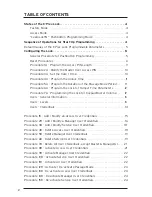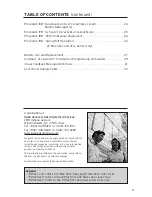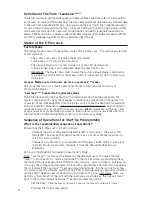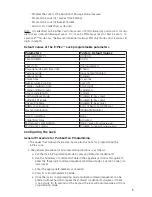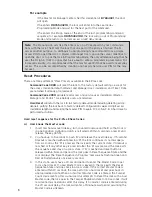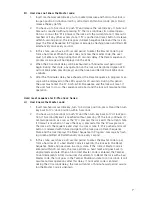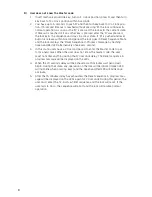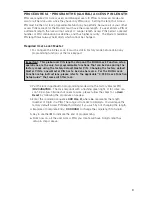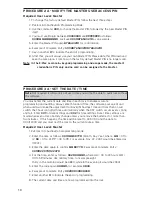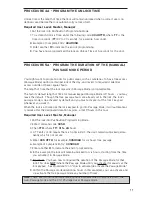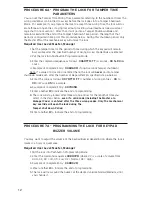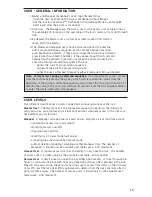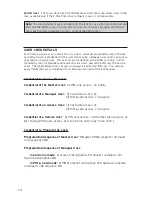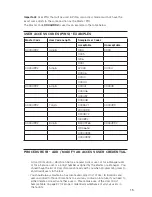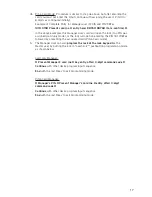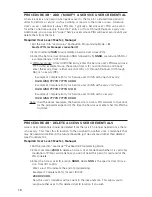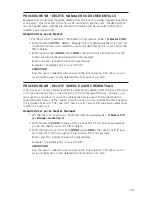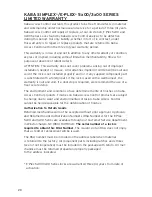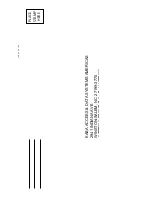
6
For example
• If the Master (or Manager) enters her/his credential of
87654321
, the door
will open.
• If he enters
#87654321#
, the lock will enter into the LearnLok
TM
Programming Mode and wait for the next part of the command.
• If he enters the # sign twice at the end of the last programming command
sequence, for example
#87654321##
, the lock will go out of Programming
Mode and return to its normal access grant/deny mode.
Note:
The # pound sign acts like the Enter key on a PC keyboard in your communica-
tions with the lock. The # tells the lock that one part of the entry is finished. The #
serves another purpose - to distinguish a programming type command from a simple
Access PIN to open the door. A Master or Manager User can use the same credential to
open the door or to put the lock in Programming Mode, the only difference being that he
uses the # sign in front to signal that he is about to enter a programming command. For
increased security, it is recommended that the master user PIN not be used for everyday
access. This can be accomplished by creating a non expiry Service user PIN for the mas-
ter user.
Reset Procedures
There are three different “Reset” levels available in the E-Plex Lock.
Command Code 099#
will reset the lock to the factory default settings, except for
the access credential length (Master and Manager User credentials and Time / Date
are retained if already programmed)
Command Code 299#
will delete all access and service user credentials (Master,
Manager and M-Unit * (see below) users are retained.
Hard Reset
will return the lock to full factory default mode including deleting all cre-
dentials, putting the lock back to factory default configuration values (4 digit access
credential lengths) and making the master PIN to again 1-2-3-4-5-6-7-8. A hard reset is
performed as follows.
Hard reset sequence for the E-Plex E5xxx Series:
A) User knows the Master code:
1.
Insert mechanical override key, turn counterclockwise and hold so that lock is
in open position (cylindrical latch is retracted). Within 5 seconds, press # and
release the key (latch).
2. You have up to 5 seconds to push ‘#’ and release the override key. If 5-second
timeout is reached without pressing ‘#’, the lock continues its normal opera-
tion. As soon as the ‘#’ is pressed, the lock exits the current state. If timeout is
reached or if any other key is pressed after the ‘#’ was pressed, the lock exits
the sequence and stays in access state. If ‘#’ is pushed and reset button is
released within 5-second period, the lock goes in Reset Sequence State and the
lock displays the ‘Reset Sequence In Progress’ message by flashing Green and
Red LED alternatively once every second.
3. In this state, users have a 20-second period to enter the Master Code to per
form a hard reset. If a bad Master Code is keyed-in, the lock exits the Reset
Sequence State and goes back in access state. If the correct Master Code is
entered within 20 seconds, the lock performs a hard reset and goes back in
unprogrammed state. When an incorrect Master Code is entered, the Tamper
Count decrements. After 4 unsuccessful attempts to Reset the lock with a bad
Master code, the lock goes in the Tamper Shutdown state for 30 seconds. It will
resume normal operations after this delay. If no master code is entered during
the 20 seconds delay, the lock will enter a 15 minute wait period assuming the
Master Code is unknown.


